Crustaceans
As far as I can tell, there are only a handful of non-marine crustaceans on the island, although some species are quite common. Most species are present throughout the Caribbean.
When hiking in the hills, the sound of falling pebbles is usually made by the Caribbean hermit crab (Coenobita clypeatus) retracting into its shell, falling from wherever it was walking. These colorful crabs have gills rather than lungs, but are still able to respire using the humidity of the air and water kept inside their shell. They are also skilled climbers, able to climb trees and rocky cliffs.
Large burrows in the sand or dirt, often near the coast or salt ponds, are usually the homes of the great land crab (Cardisoma guanhumi), a common species that grows quite large over the course of up to 30 molting cycles.
At the edge of mangroves wetlands, fiddler crabs (Uca pugnax) are quite abundant. Easily identified by their one grossly oversized claw, they typically retreat into the water or into burrows in sand or mud near the shore when approached.
The ghost crab (Ocypode quadrata) gets its name from its translucent shell and can be seen scurrying around sandy beaches amongst the waves where it feeds.
The mangrove crab (Aratus pisonii) and black land crab (Gecarcinus ruricola) are less frequently seen in the open, but often have burrows under rocks or logs where they rest during the day. The black land crab is known locally as the jumbie crab. Jumbies are spirits of the dead and typically considered evil, so this crab is not eaten.
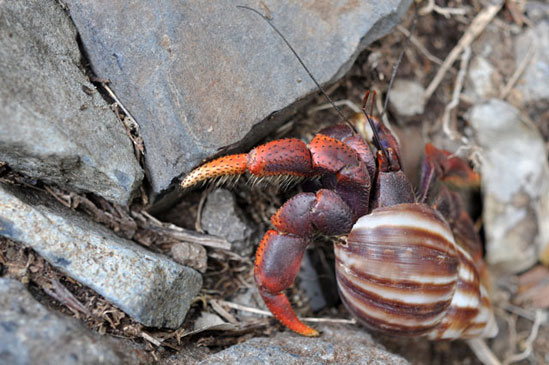
The Caribbean hermit crab (Coenobita clypeatus) is very common, and can be found from the seaside to the mountains. Primarily nocturnal, they can be seen traveling during the day or hiding beneath stones, sometimes in large groups. This crab is wearing the shell of the East African land snail, a recent invasive species. Historically they utilized much sturdier shells from marine snails.
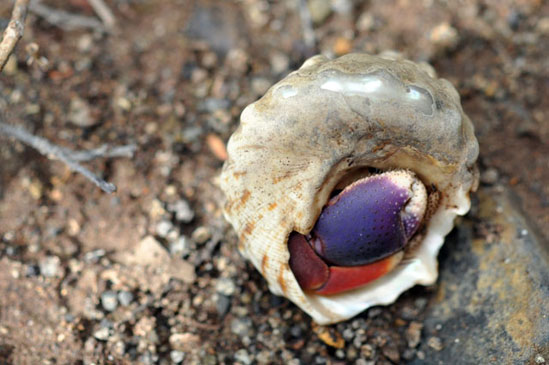
The Caribbean hermit crab is also known as the purple pincher, after the large purple claw it uses to block the entrance to its shell. Others call it the soldier crab.
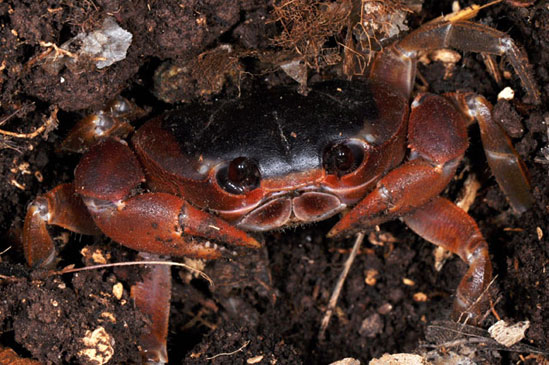
The black land crab (Gecarcinus ruricola) is a small land crab which spends its larval stage in the ocean before returning to land where they may be found in burrows under stones.
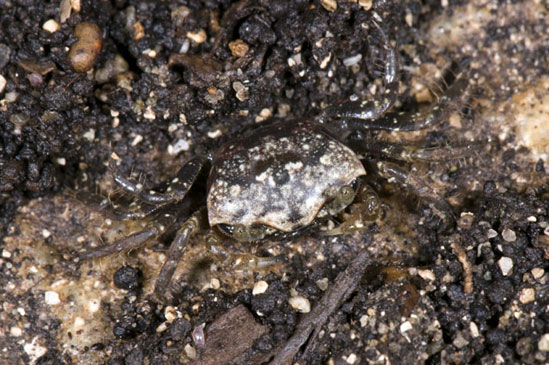
The mangrove crab (Aratus pisonii) is found near mangroves and is semi-aquatic.
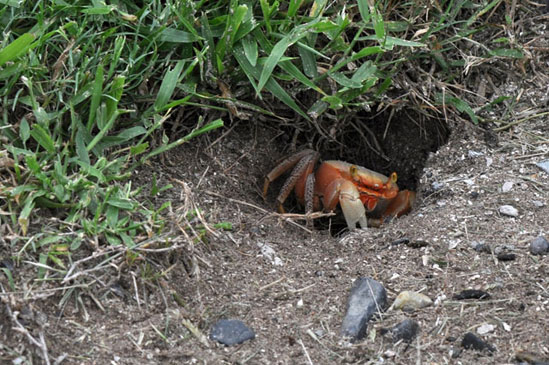
The great land crab (Cardisoma guanhumi) is often pale gray or tan and is most frequently seen peeking out of large burrows in the sand or dirt. Large adults may weigh up to 500 grams. This crab is locally known as the bush crab.
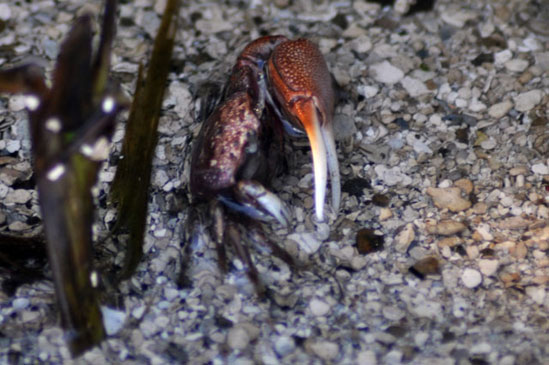
The fiddler crab (Uca pugnax) is common near the shore of salt ponds and mangrove wetlands. The single large claw may sometimes be as large as the rest of the body.
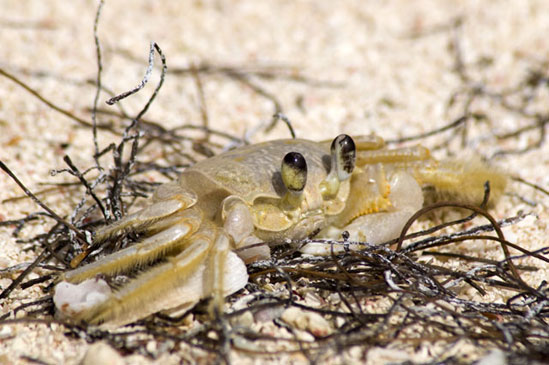
The ghost crab (Ocypode quadrata) has a translucent shell and is primarily seen on sandy beaches where it feeds on organic matter brought in by waves.
